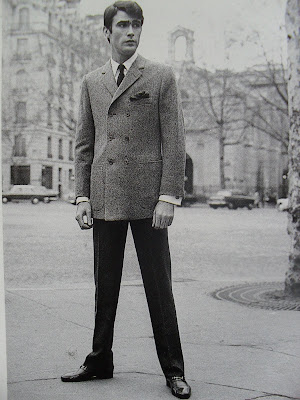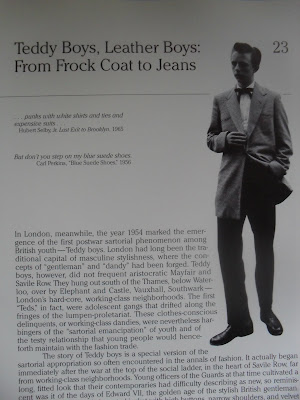BOUDICCA FALL 2006
The Boudicca label came to my attention when Jovana mentioned a particular collection which consisted of one very interesting huggable jacket. As a lover of anything black and white or monochromatic i was initially drawn to the simplicity in colour thats exists in the above collection. But upon closer inspection the design details come through. There is a sense of simplicity or gothic classicism that exists in the garments, heightened by the structural and architectural forms and silhouettes present. A slight femininity somehow finds place in large pleated skirts juxtaposing the harsh masculinity. There's a beautful balance between the elements of form and this is perefectly matched in fabrication. A matte gloss, stiff drape, sleek and voluminous where needed; the fabrics were diverse, but moulded together, a dark fusion that accentuated the desired silhouette and gave way to sharp forms. But within all the diversity within the range, it was constructed or balanced in a way that it seemed to melt into itself.
NEW YORK, February 10, 2006
By
"Mind-boggling—in a good way," is how one editor described Zowie Broach and Brian Kirkby's remarkable Boudicca collection. Titled An Invisible City, this was the most pure—if somewhat indulgent—distillation to date of the label's vision. Never one to understate matters, Broach described that goal backstage as a quest "to forge the identity of a future of design that is not just about making clothes, but the craftsmanship."As with most Boudicca collections, this one was about breaking down categories and conventions. Broach and Kirkby dissected shirts and tuxedos to come up with boleros made from the collar and shoulders of a jacket; strap-on waistcoats; skirts with attached vests; and shirts with jacket lapels. Some were more conceptual than wearable, but others—a leather jacket styled like a shirt, a sharp trouser, a high-neck shirt—weren't.
The real drama of the collection, though, came from the designers' attempt to, as they put it, "challenge the pleat," folding material to create astounding architectural constructions. Something that looked like a (relatively) straightforward suit from the front, for instance, was likely to be sporting a bustle at back. Seen from the side, the models, surrounded by fans of pleats, looked like intergalactic Degas dancers—just the kind of girls one might expect to find in an invisible city.





















